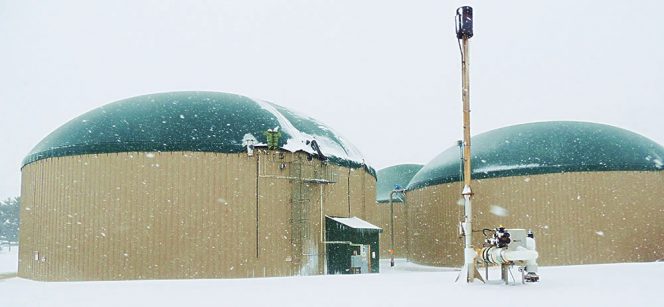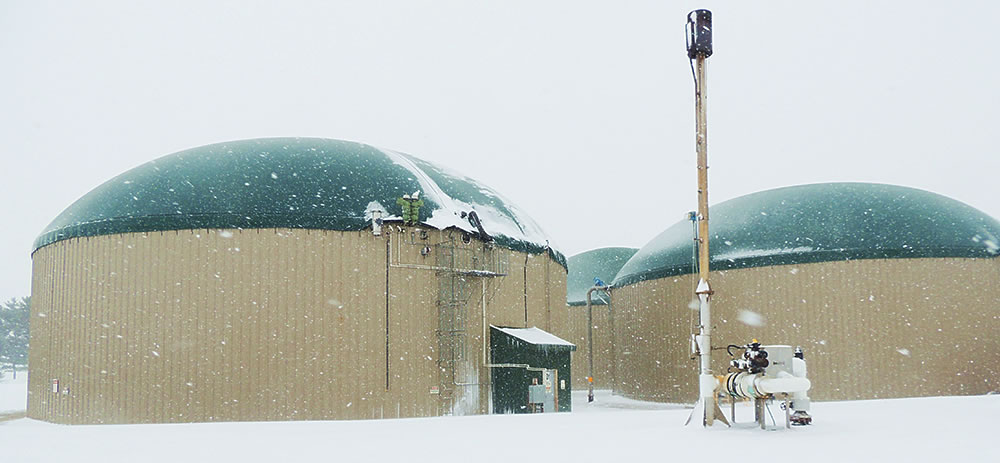
Under new law tax credits come to life again, for some anaerobic digesters.
Michael H. Levin
On December 20, as part of the “Further Consolidated Appropriations Act of 2020,” Congress passed and the President signed the “Taxpayer Certainty and Disaster Tax Relief Act of 2019.” That concluded the most suspenseful struggle in recent memory to extend federal tax credits for anaerobic digestion (AD) and other renewable energy facilities (see “2018 Bipartisan Budget Act Extends Tax Credits”).
For nearly a year, participants and observers were whipsawed by shifts over whether or how expired and expiring renewables credits might be extended. Arrayed on one side were (e.g.) conservative budget hawks and Administration-allied fossil fuel supporters who saw their “best shot to terminate these temporary tax credits,” many of which had expired for an unprecedented two years. On the other side were solar, wind and biomass sectors plus Paris Climate Accord advocates, asserting that without extenders huge numbers of “good jobs” and greenhouse gas reductions would be foregone. It seemed anyone’s guess what tax credit provisions might squeak through impeachment proceedings, the U.S.-Mexico-Canada Trade Agreement debate, a possible government shutdown, and an oncoming Presidential election.

Anaerobic digesters producing electricity quality for PTC and ITC tax extender credits. Photo by Doug Pinkerton
In the end no one’s dreams survived. Against stiff odds, tax benefits for biomass-to-electricity facilities generally were extended for three years (two of them retroactive) from 2018 through 2020, bolstered by GOP fears of continued farm-state anger at the Administration’s avalanche of Renewable Fuel Standard (RFS) refinery waivers (see “State of Play in Renewable Fuels Markets”). But all parties came away privately disappointed.
Proposals Not Making The Cut
Ambitious AD-related proposals that fell by the wayside included:
• HR 4186, the “Renewable Electricity Tax Equalization Act,” which would have extended the PTC “begin construction” eligibility window through 2024 and nearly doubled the Code Section 45 production tax credit (PTC) for biomass, landfill gas and several other renewable electricity technologies from 1.3¢/kWh to 2.4¢/kWh, equal to the historically higher PTC for wind.
• HR 3744, the “Agriculture Environmental Stewardship Act,” which would have created new broad stand-alone 30% Investment Tax Credits (ITCs) through 2021 for both facilities like AD that produce “green gas” (renewable natural gas or RNG), and facilities that recover nutrients from digestate or livestock manure. These provisions were “broad” because they would have applied retroactively, whenever such facilities began operating. They also would expressly have covered ancillary equipment like gas conditioners as well as thermal driers or “any other property used to recover nutrients.” HR 3744 was the latest failed “green gas” bill in a line dating back a decade.
• The “Growing Renewable Energy and Efficiency Now” (GREEN) Act, a discussion draft released November 19 by the House Ways and Means Committee. Among many other things, the GREEN Act generally would have extended most PTCs and parallel ITCs through 2024, pushing back existing phase downs. It also would have provided new 30% ITCs for stand-alone energy storage, waste heat recovery, and “biogas property [that] converts biomass into a gas (which is at least 52% methane) for [any] productive use.” Perhaps most striking, it would have allowed renewable energy developers immediately to claim 85% of the applicable ITC as payment against tax and collect those payments as tax refunds. Thus developers would have been able to monetize tax credits without the costs or access barriers of tax equity transactions controlled by a few dozen institutional investors reviewing hundreds of projects to cherry-pick.
Takeaways For AD And Other Developers
• General: One argument for the 2017 Tax Cuts Act’s permanent corporate tax reductions from 35% to 21% was that tax credits would become much less central with federal rates lowered 40%. That now seems smoke and mirrors given recent tax credit battles. On the other hand, one argument against retroactive tax credits — that they’re “windfalls” which can’t affect past behavior — also seems undercut. The change early last decade from “placed in service” to “begin construction” as the eligibility trigger for wind, solar and several other types of renewable energy facilities shifted this calculus. With longer timelines for development and grid or pipeline interconnection, it’s become more problematic whether projects timely “begun” also will be completed without such credits.
• Solar: Despite pressure for a new 5-year extension, nothing changed. The solar ITC still steps down to 26% for projects that “begin construction” in 2020 and to 22% for projects that “begin construction” in 2021, with a firm stop for projects not in operation before 2024. Projects not completed by 2024 drop to a 10% ITC. “Non-business” residential installations owned by homeowners still are zeroed out after 2023.
• Wind: Both the PTC and ITC were extended one year to avoid expiration in 2020, with PTC phase downs pushed back to 60% of credit value for projects that “begin construction” in 2020. However, Congress left in place the previous PTC phase down to 40% of credit value for projects that “began construction” in 2019. This flips the usual scenario where developers seek to “begin construction” as early as possible to optimize tax benefits (see “Investment Tax Credits for AD Projects”). It appears to mean that wind projects which “began construction” last year only can claim an ITC worth 12% (40% X 30%) of eligible basis, creating incentives for these developers to attempt to show they “began construction” in 2020. Combined with other apparent missteps — notably, failure to fix the Tax Cuts Act’s “retail glitch” inadvertently requiring retail, restaurant and other physical improvements to be amortized over 39 years rather than the intended year — it virtually guarantees more tax benefit wars.
• Biomass: While it didn’t get nearly what it sought, this sector was the biggest winner. The open-loop biomass-to-electricity PTC under Section 45(d)(3) was extended 3 years (2 of them retroactive) for projects that “begin construction” before 2021, as were other PTCs for “orphan technologies” like electricity-producing geothermal, landfill gas, municipal-waste-to-energy, qualified hydropower, and marine/hydrokinetic facilities whose “begin construction” eligibility window had expired at the end of 2017. These facilities’ ability to “jump” from the 10-year PTC to the more predictable lump sum ITC was similarly extended. A raft of related provisions — including $1/gal biodiesel/renewable diesel credits, 10¢/gal small agri-biodiesel credits, $1.01/gal second generation biofuel producer credits, alternative fuel vehicle refueling equipment credits, and alternative fuel excise tax credits — also were extended, generally through 2020 for production or equipment placed in service after 2017. (No “begin construction” flexibility applies to these categories — equipment must operate or production occur in pertinent years for credits to be claimed.)
Owners of open-loop biomass-to-electricity facilities (AD installations using biomass-derived biogas to generate electricity or in certain cases sell it for power generation) retain a unique ability to designate lessees or operators as credit recipients. In addition, both a special 50% “bonus” depreciation deduction for second generation biofuel facilities, and the Tax Cuts Act’s 100% “bonus” depreciation deduction, generally remain available to AD developers for facilities placed in service before 2021 and 2024 respectively. The 100% provision applies to purchased facilities, not just originally constructed ones.
This is not the end of the tax credit story. On December 20 the American Biogas Council optimistically noted that “passage of this bill [indicates] Congress’ readiness to address remaining disparities in the tax code . . . and [is] a first step to more comprehensive renewable energy tax policy . . . in 2020.” While the Council implied more extenders this spring, that step may not come until or after a lame-duck session following the November elections.
Mike Levin, a BioCycle Contributing Editor, is managing member of the virtual law firm Michael H. Levin Law Group, PLLC (Washington DC) and a principal in NLGC, LLC, Carbon Finance Strategies LLC, and Solar Shield LLC, which respectively focus on capital formation for renewable energy projects and the optimization/development of ground-mounted solar PV facilities in MA and roof-top PV systems in the District of Columbia. From 1979-1988 he was national Regulatory Reform Director at the U.S. EPA.










